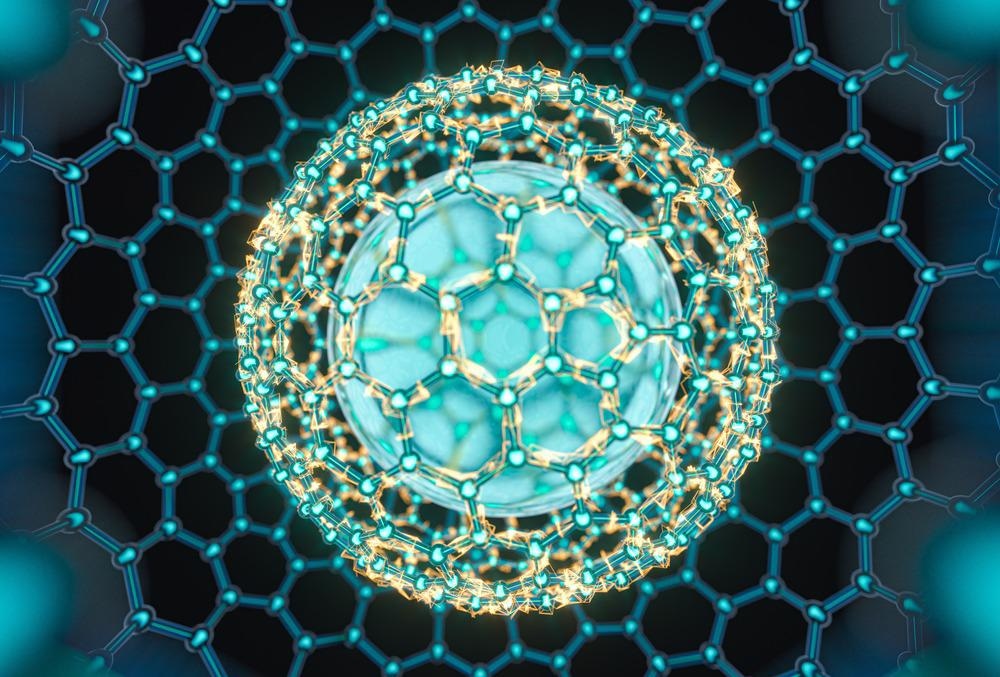The advancement of nanotechnology has enabled further development of conventional bioimaging technology to effectively analyze individual cells at the subcellular level. This is a significant component for disease comprehension and advances efficient therapeutics.

Image Credit: Vink Fan/Shutterstock.com
While current advanced microscopy methods such as atomic force microscopy (AFM) can be effective for imaging nanoscale biomolecular dynamics, its limited scope comprising extracted biological systems from cells can be challenging. However, novel research may overcome this obstacle using nanoendoscopy-AFM, which will be explored further in this article.
Atomic Force Microscopy
Atomic force microscopy can be described as a type of scanning probe microscopy that utilizes a probe or tip, connected to a cantilever, scanned over the surface of a sample, where a small repulsive force is present between the tip and the sample itself.
This high-resolution technique can be utilized for various sample types, including thick film coatings, ceramics, glass, composites, biological and synthetic membranes, microorganisms, and biomaterials. Its use enables information to be obtained about a sample comprising variables such as physical topography and measurements of physical, chemical, or magnetic properties.
Interestingly, this technique is considered the only technique that enables label-free imaging of nanoscale biomolecular dynamics and is deemed superior to other bio-imaging tools such as fluorescence microscopy or electron microscopy.
Imaging Challenges
While fluorescent microscopy can be useful for imaging protein and organelle dynamics within living cells, it cannot be used to visualize molecular structures as this technique images the position of fluorescent probes as opposed to the target molecules.
Additionally, although electron microscopes are effective for imaging nanostructures of frozen cells in a vacuum, the imaging of nanodynamics of living cells under physiological environments is more challenging.
The limitation of AFM, the most advanced bioimaging technique, lies within imaging living systems requiring extraction and reconstruction on solid substrates.
Intracellular AFM imaging techniques can be classified into two categories, including elasticity mapping and ultrasonic AFM.
Elasticity mapping consists of a strong force that is directed to the cell surface and a variety of elastic responses are detected and subsurface imaging of organelles can be achieved.
Ultrasonic AFM imaging involves acoustic waves to be produced through the oscillation of either the AFM tip or substrate. Here, the waves transmitted through the intracellular space ultimately result in intracellular structures, such as the nucleus and cytoskeleton within living cells, to be seen.
Although there has been some progression towards visualization of intracellular structures within a 2D format, the challenge of providing a 3D visualization of these components remained.
Nanoendoscopy-AFM
Nanoendoscopy-AFM, consists of a needle-like probe inserted into a living cell, enabling direct access to internal nanodynamics within the cell. This advancement in AFM technology overcomes the limitations of bioimaging, with advantages of high-resolution, nanomechanical mapping and molecular recognition that expands the range of intracellular structures observable within living cells.
A report published in Science Advances, headed by a research team at the Kanazawa University, Japan, utilized nanoendoscopy-AFM through the use of a needle-like probe within a living cell to present a 3D map of actin fiber as well as 2D nanodynamics of the membrane’s inner scaffold. This critical research furthered the comprehension of the 3D arrangement of actin filaments within their intracellular environment within a biological system.
This advanced technique directly accessed target intracellular components and did not cause any detectable changes to the cell viability – a revolutionary development in bioimaging for AFM technology.
This research allowed imaging of whole cells with the nanoprobe being long enough to completely penetrate the cell until the substrate was reached; the diameter of the probe was below 200 nm to reduce membrane damage, a key advantage for this spearheading study.
Advanced Applications
The applications of this advanced bioimaging technique that enables 3D maps of internal cell structures as well as 2D projections, can lead to revolutionary discoveries and further the field of biomedical research, medicine, and nanotechnology.
The use of this novel technique provides critical insight into the mechanical interactions of cellular components as well as another approach to in vivo analysis. This could be significant for the role of intracellular nanomechanics for healthy cell functionality and aid in the measurement of properties such as stiffness and adhesion.
The innovative uses for this technology can be plentiful and promising, with further comprehension of living systems being a critical premise for therapeutics and drug delivery, proven by the inclusion of HeLa cell experimentation. HeLa cells are an immortalized cell line derived from cervical cancer cells.
The penetration into living cells as an advanced analysis method allows information to be obtained with direct observation and manipulation of intracellular and cell surface dynamics, which can assist with critical insight into inner cell biological processes – a key component for understanding mechanisms of action and revolutionary therapeutics.
Continue reading: Atomic Force Microscopy-based Nanoindentation: An Overview
Further Reading and References
Cheemalapati, S., Winskas, J., Wang, H., Konnaiyan, K., Zhdanov, A., Roth, A., Adapa, S., Deonarine, A., Noble, M., Das, T., Gatenby, R., Westerheide, S., Jiang, R. and Pyayt, A., (2016) Subcellular and in-vivo Nano-Endoscopy. Scientific Reports, 6(1). Available at: https://doi.org/10.1038/srep34400
Hameed, B., Bhatt, C., Nagaraj, B. and Suresh, A., (2018) Chromatography as an Efficient Technique for the Separation of Diversified Nanoparticles. Nanomaterials in Chromatography, pp.503-518. Available at: https://doi.org/10.1016/B978-0-12-812792-6.00019-4
Penedo, M., Miyazawa, K., Okano, N., Furusho, H., Ichikawa, T., Alam, M., Miyata, K., Nakamura, C. and Fukuma, T., (2021) Visualizing intracellular nanostructures of living cells by nanoendoscopy-AFM. Science Advances, 7(52). https://doi.org/10.1126/sciadv.abj4990
Pentassuglia, S., Agostino, V. and Tommasi, T., (2018) EAB—Electroactive Biofilm: A Biotechnological Resource. Encyclopedia of Interfacial Chemistry, pp.110-123. Available at: https://doi.org/10.1016/B978-0-12-409547-2.13461-4
Phys.org. (2022) Visualizing intracellular nanostructures of living cells using nanoendoscopy-AFM. [online] Available at: https://phys.org/news/2022-01-visualizing-intracellular-nanostructures-cells-nanoendoscopy-afm.html
Disclaimer: The views expressed here are those of the author expressed in their private capacity and do not necessarily represent the views of AZoM.com Limited T/A AZoNetwork the owner and operator of this website. This disclaimer forms part of the Terms and conditions of use of this website.